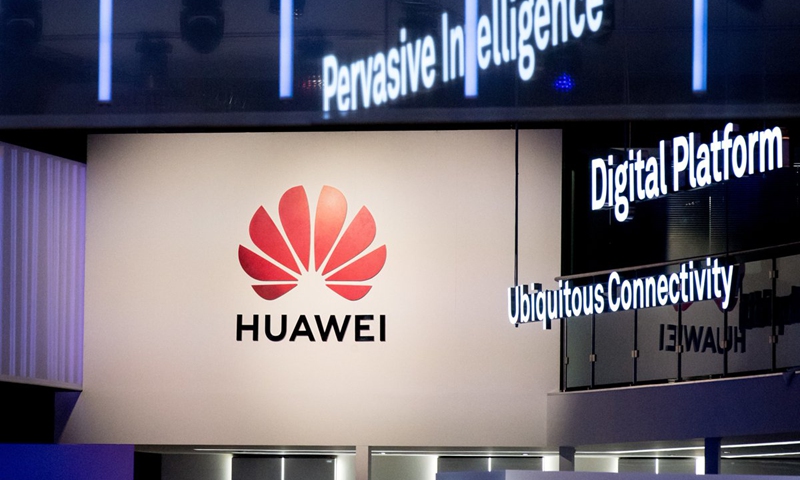Huawei's raw material stockpile spending triples since 2017
Source: Global Times Published: 2020/7/18 16:12:46

Huawei
Huawei, a leading Chinese telecoms equipment maker, saw its spending on raw material stockpiles triple during the 2017-19 period, amid an intensified US crackdown, media reports said on Friday.
Huawei's expenditure on raw material stockpiles rose 65 percent year-on-year in 2019 from its 2018 level, to account for 35 percent of all Huawei stockpile spending, domestic news site guancha.cn reported.
In terms of value, the stockpile spending on raw materials in 2019 reached 58.52 billion yuan ($8.37 billion), from 2018's 35.44 billion yuan. In 2017, when there was no US crackdown on Huawei, such spending was a mere 19 billion yuan, accounting for 26.3 percent of the total.
On Friday, Taiwan Semiconductor Manufacturing Company, the world's biggest semiconductor manufacturer, said it plans to suspend new orders from Huawei from September 14. Chinese analysts said the move could disrupt Huawei's smartphone shipments and new phone launches.
Fu Liang, a Beijing-based telecoms industry expert, told the Global Times on Saturday that raw material expenditure includes chips for smartphones, and base stations, displays and camera modules so it can't be said that all stockpiling is done regarding chips to prevent a US supply chain ban.
"However, given the nature of the modern telecommunications industry, with chips for smartphones and 5G base stations seeing significant upgrades by the month, it is quite difficult to stock up chips for future use," Fu said. "The fact is stockpiling can be arranged for the next three to six months and no further than that."
Compared with previous situation, Huawei's offerings have now extended to include smartphones, TVs and smartwatches, and all these products need fiscal provisioning, noted Fu.
Huawei posted a revenue of 454 billion in the first half of 2020, a 13.1 percent increase year-on-year, with a net profit margin of 9.2 percent.
Although revenue gains beat predictions amid the US chip ban and an uncertain situation in Europe, growth was still far below the 23.2 percent jump in revenues over the same period in 2019, indicating that the US ban is starting to take effect on the world's largest provider of 5G technology, analysts said.
For the entire 2019, the firm posted an annual revenue growth of 19.1 percent year-on-year despite facing harsh sanctions from the Trump administration.
Global Times